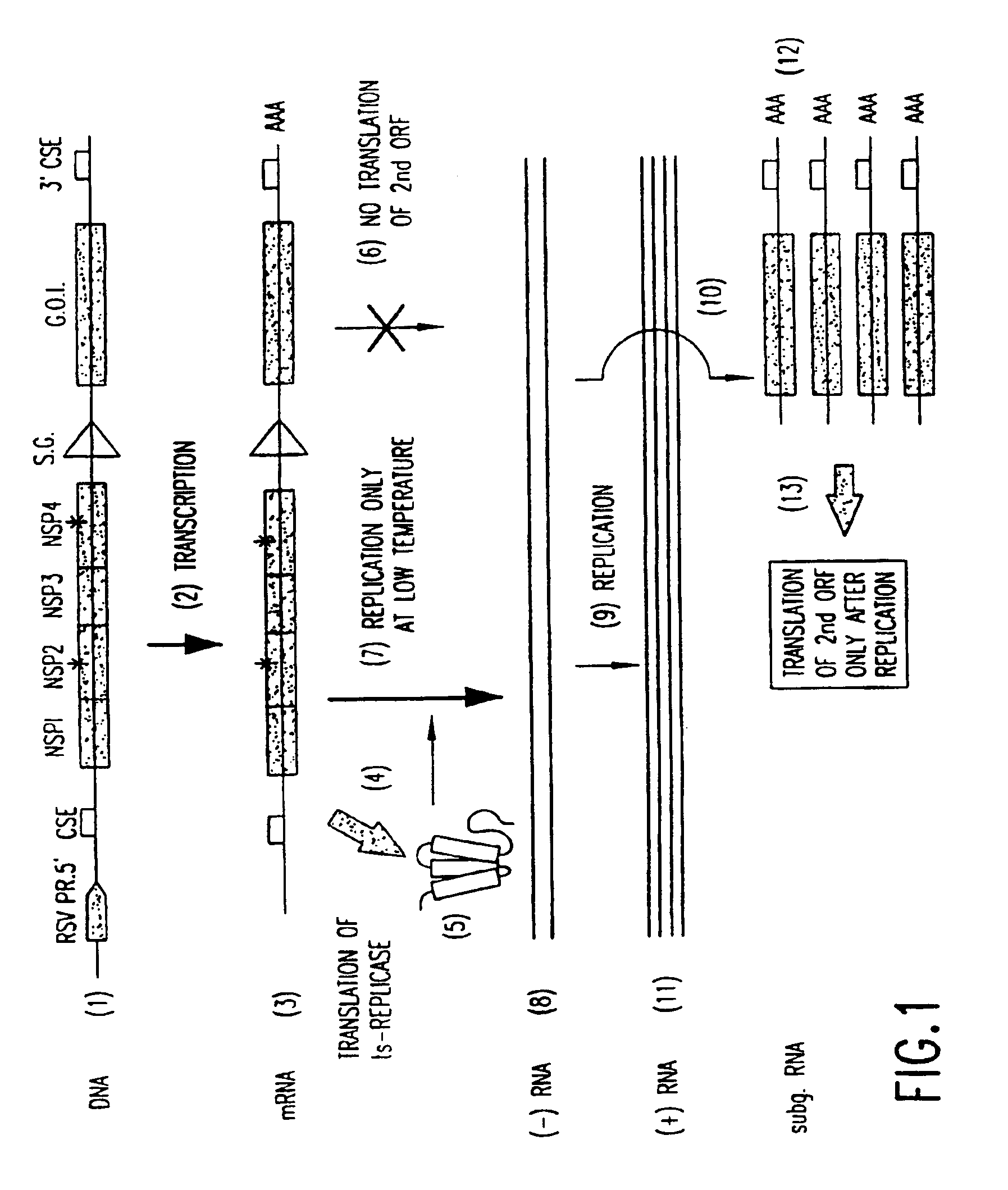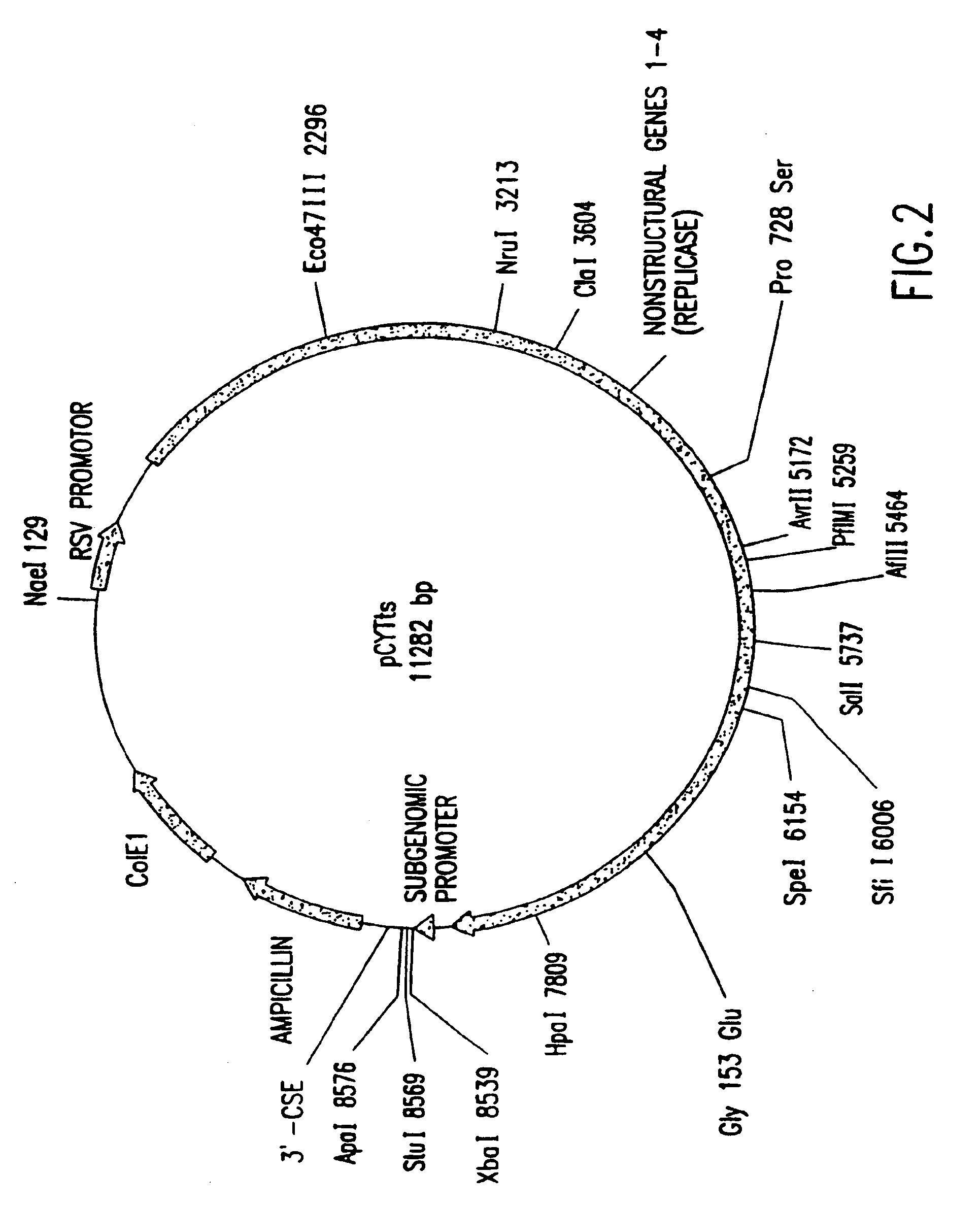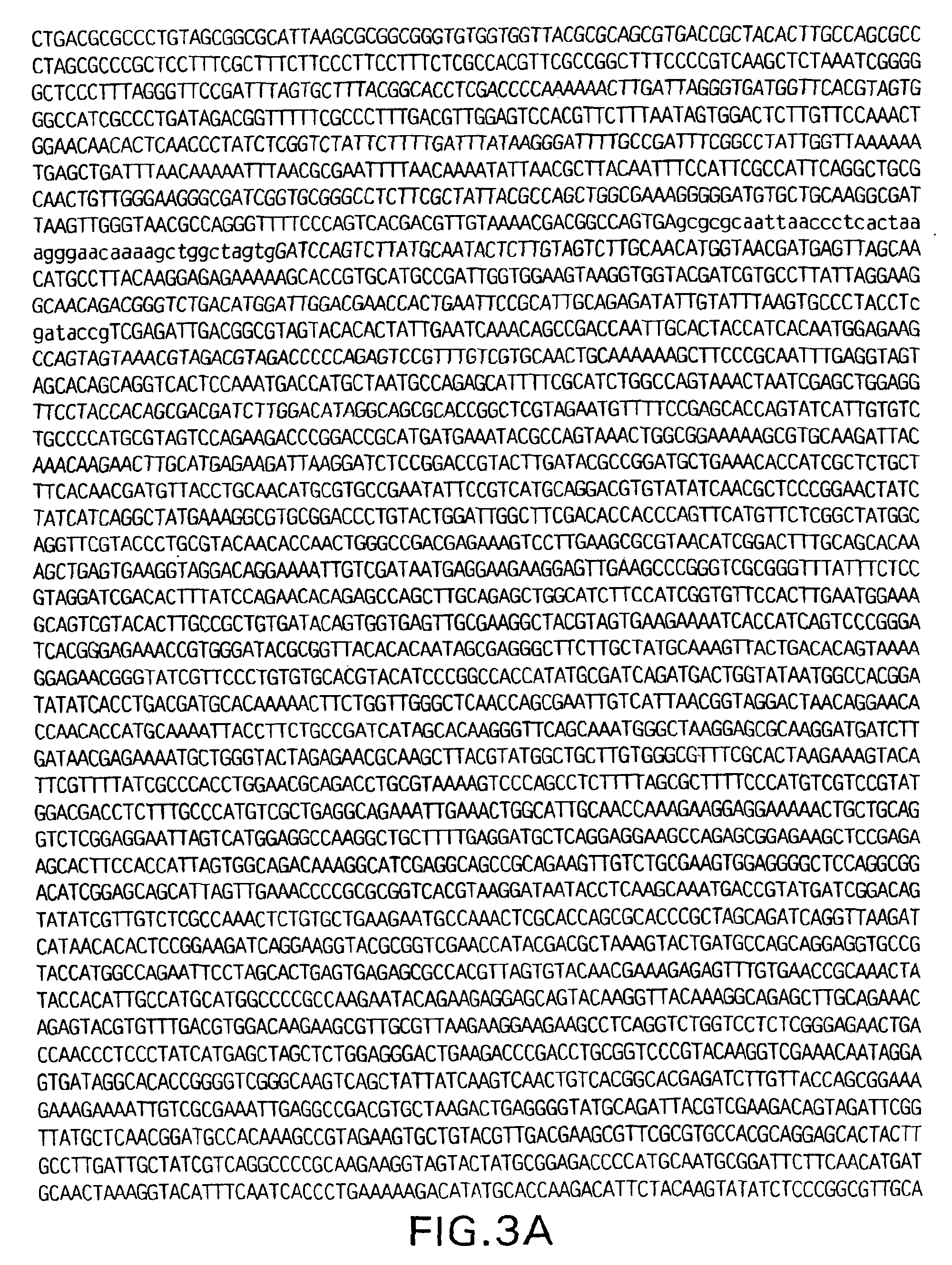Inducible alphaviral gene expression system
a gene expression system and inducible alphaviral technology, applied in the field of expression vectors, can solve the problems of inability to tolerate expression, preventing the use of the tta system in gene therapy altogether, and lacking the specificity required to regulate genes in mammalian cells and organisms, etc., and achieve the effect of precise regulation of the amount of specific rna molecules produced
- Summary
- Abstract
- Description
- Claims
- Application Information
AI Technical Summary
Benefits of technology
Problems solved by technology
Method used
Image
Examples
example 1
Construction of the pCYTts Vector System
[0170]Manipulations and sequencing of DNA were carried out by standard procedures. The mutations in nsP2 were introduced by PCR using the following oligonucleotides:
oligo-nsp2 1: 5′-AACATTGAAATCGATATTACAGGGG (SEQ ID NO:2),
oligo-nsp2 2: 5′-CGGGTTATGGTCGACCGGGC (SEQ ID NO:3),
oligo-nsp2 3: 5′-GTGCCCTCCCCTGAGTTTAAACAATTCAGGGCCGA ACGCG (SEQ ID NO:4), and
[0171]oligo-nsp2 4: 5′-GAATTGTTTAAACTCAGGAGGCACCCTCGTGG (SEQ ID NO:5), the single restriction sites used for first analysis and subsequent cloning (DraI, ClaI and SalI) are underlined. PCR reactions were performed using either oligo-nsp2 1 (SEQ ID NO:2) and oligo-nsp2 3 (SEQ ID NO:4) or oligo-nsp2 2 (SEQ ID NO:3) and oligo-nsp2 4 (SEQ ID NO:5). 100 pmol of each oligo was used and 5 ng of the template DNA (pSinRep5; Xiong, C. et al., Science 243:1188-1191 (1989)) was used in the 100 μl reaction mixture, containing 4 units of Taq or Pwo polymerase, 0.1 mM dNTPs and 1.5 mM MgSO4. All DNA concentrations...
example 2
Regulated Expression of GFP in Transient and Stable Expression
[0180]The pCYTts system was successfully used to express cytoplasmic proteins, as an example we used the green fluorescent protein (GFP) of the jellyfish Aequorea Victoria (Crameri et al., Nat. Biotech. 14:315-319 (1996)). GFP is ligated into pCYTts via XbaI and Bsp120 I (Fermentas). Clones with the correct insert were identified by restriction digest. The GFP expression was tested in both, transient and stable expression.
[0181]Transient transfection in BHK 21 cells was carried out using the CaPO4 precipitation transfection protocol: 6 μg of plasmid DNA (pCYTts GFP) in 30 μl H2O was mixed with 30 μl of an 1 M CaCl2 solution. After addition of 60 μl phosphate buffer (50 mM HEPES, 280 mM NaCl, 1.5 mM Na2HPO4, pH 7.05) the solution was vortexed for 5 seconds, followed by an incubation at room temperature for 25 seconds. The solution was immediately added to 2 ml HP-1 medium containing 2% FCS (2% FCS medium). The medium of a ...
example 3
Regulated Expression of SEAP in Transient and Stable Expression
[0189]The pCYTts system was successfully used to express secreted proteins, as an example we used the secreted alkaline phosphatase (SEAP) of human origin (CLONTECH Laboratories, Inc., 1020 East Meadow Circle, Palo Alto, Calif., 94303, USA). The SEAP coding sequence is ligated into pCYTts via XbaI and StuI. Clones with the correct insert were identified by restriction digest. SEAP expression was tested for both transient and stable expression.
[0190]Transient transfection in BHK21 cells was carried out using the CaPO4 co-precipitation transfection protocol as described in Example 2.
Stable Transfection in BHK21 Cells
[0191]The stable transfection was carried out essentially as described for transient transfection, except that linearized plasmid DNA was used. Twenty μg of pCYTtsSEAP was incubated with 30 units of MluI in an appropriate buffer for at least 4 hours at 37° C. 10 μg of pSVneo was digested with 30 units of ScaI f...
PUM
| Property | Measurement | Unit |
|---|---|---|
| temperatures | aaaaa | aaaaa |
| temperature | aaaaa | aaaaa |
| temperature | aaaaa | aaaaa |
Abstract
Description
Claims
Application Information
 Login to View More
Login to View More - R&D
- Intellectual Property
- Life Sciences
- Materials
- Tech Scout
- Unparalleled Data Quality
- Higher Quality Content
- 60% Fewer Hallucinations
Browse by: Latest US Patents, China's latest patents, Technical Efficacy Thesaurus, Application Domain, Technology Topic, Popular Technical Reports.
© 2025 PatSnap. All rights reserved.Legal|Privacy policy|Modern Slavery Act Transparency Statement|Sitemap|About US| Contact US: help@patsnap.com



